Magical coins appear throughout Twin Peaks and in other Lynch projects. Henry in Eraserhead, for example, keeps a little wishing well full of coins in the top drawer of his dresser. In Wild At Heart, silver dollars play a coded role in hiring assassins. In the Secret Diary, a gold coin appears to Laura after she, perhaps possessed by BOB, rapes Harold Smith.
On the way out of Harold’s, Mrs. Tremond’s grandson, Pierre, saw me and came up to me and pulled a gold coin out of my ear and walked away.
Have you ever examined a coin? What is it, really? A shiny piece of metal; a head inside a circle; a myth; a hieroglyph; a ghost? Coins were called “owls” in ancient Greece. Maybe they’re not what they seem. It could be that through coinage we can reach a new level of the story and by extension a new level of the mind. Let’s look at them as a way beyond symbolic consciousness to a “hieroglyphic consciousness,” as William Irwin Thompson calls it, a consciousness that thinks through the nonverbal languages of angels and “celestial intelligences” like music and mathematics.
Just like the four vomits, we are faced with four coins in The Return, and just like the vomits, each one is a different size and is handled by a different character in a different location. In chronological and descending order (!):
- a quarter by Cooper in a casino,
- a dime by Red behind a warehouse,
- a nickel by Hawk in a bathroom,
- a penny by Sarah near her childhood home.
Countdown: 25…10… 5… 1.

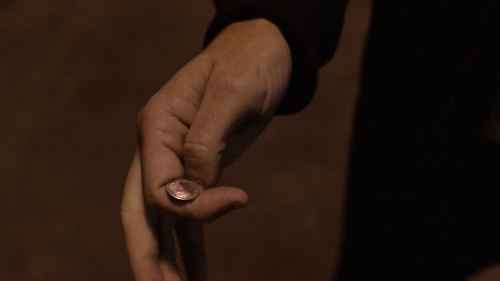

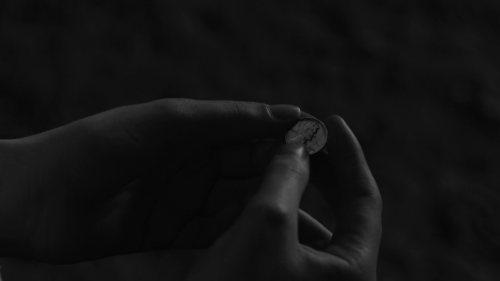
On the surface of the story, they’re just picked up, tossed, or dropped—nothing magical. More, each one is a head in a bubble, and is a hieroglyph (sacred picture) that could signal something unspeakable—The locations where they appear are similar to violent locations in Laura’s story. We should consider how each coin resonates with the casino chip from Laura’s mouth, and perhaps even with the coin that a Horne brother flipped when she was “the new girl.” Let’s also look at some of the cultural and spiritual histories associated with coins in general, U.S. coins in particular, all overlighted by the great Lou Ming and his Find Laura hypothesis.

Quarter
This is the severed head of The United States of America’s Founding Father, George Washington, but if we didn’t know better—aliens looking in—we’d think it was his drag queen alter-ego, Liberty! Originally coins had notched edges to discourage people from shaving off some of the precious metals, and there are 119 notches on the quarter. Alas, at around the same time Cooper is rubbing the quarter’s edge, Drugged-Out Mother is yelling 1-1-9! Furthermore, before the revolutionary war, the number of slaves Washington kept at Mount Vernon was 119.
After the war, that number grew to about 315.
Cooper rubs the coin and says a magic word—Hello-oo—which is supposed to come after a jackpot, but causal relationships are all messed up in Twin Peaks. The reverse movement of the Red Room is still with him, as is the spooky cord Gm, Em7b5 or something.
The last time we saw a quarter was when Bobby in FWWM fed one to the telephone booth. (What coin did the Horne brothers flip in Episode 2? Was it a quarter?). Each coin, for Cooper, becomes a ritual, a prayer, and a retro-causal agent.
Who is this magical man? It’s well known that in the American religious imagination, Washington achieves a sort of godhood, painted literally by Constantino Brumidi in the eye of the U.S. Capitol Building: We see a white slaver, in a white wig, rising to the heavens like Christ, standing on a rainbow, flanked by Liberty, Victor, and a bunch of other pagan gods and goddesses. This is America.
The US continues to dream of its own deification and apotheosis. Former MPAA President Jack Valenti famously remarked that,
Washington and Hollywood spring from the same DNA.
Columbia Pictures, ha ha. Check out John Gast’s 1872 painting American Progress where Columbia (another personification of the US) looks like Laura Palmer as an angel floating over the landscape, holding a powerline.
In God We Trust. Now the Divine Father’s head is fed into—and vomited out of— slot machines in Vegas. I wonder what it means that Cooper received his first 20 magic Father Tokens from TV and film legend Meg Foster, a hauntingly familiar face (They Live; The F.B.I.; Bonanza; Mod Squad; Hawaii Five-O; Police Story; Miami Vice; The Cosby Show—as Dyan). Tangentially, Lynch describes using 20 “rickies” to come up with his characters and stories, and how all the rickies—pebbles, flies, coins, doesn’t matter—look the same, therefore different names are what give them their character.
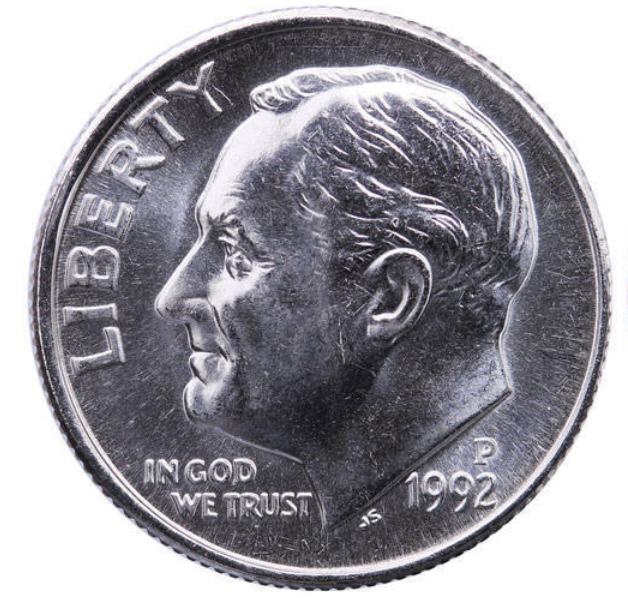
Dime
The next coin appears in Part 6: a dime, the smallest and thinnest US coin, born in 1945 (!?!), stops time and then teleports into Richard’s mouth. (!!!!!!!!) He takes it out, looks at it dumbfounded, then another story resumes and the dime falls back into Red’s hand as if nothing happened.
This scene resonates with the time-stopping sequence at the Philadelphia office in FWWM: one story is frozen while the other continues onwards. The coin is held in midair for something like 15 seconds, which allegorizes it, mythologizes it, charges it with hieroglyphic and mythopoeic qualities akin to the spinning bone-to-satellite sequence in 2001: A Space Odyssey.
“He’s dead.” Maybe the coin marks Richard for death—a last rite—like the Greek and Roman custom of placing a Charon’s obol into the mouth of a dead person. The eucharist is another version, the viaticum, “sustenance for the journey,” probably related to some oral fixation. Touching the jade ring saves you from possession, whereas touching the dime might sentence you to death. I can imagine that the little boy in the park picked up a similar dime while playing with his mother, clutching it at the moment of impact.
The idiom “Heads I win, tales you lose” that Red says after the coin toss instead of before it, echoes something we hear BOB say in the international pilot: “Heads up, Tails up.” Versions of this “it’s inevitable” idiom have appeared in English since the 17th century, it’s a video game trope, and, get this, there is a Heads I Win Tails You Lose novelty coin at the National Museum of American History that memorializes a naked woman while cutting her head off. The idea of “Heads” and “tails” also reiterates the duality and daily verticality of above/below, endpoints of the body “separated” by a horizon of unknowing. As puns, they mean something sexual and mystical; heads are dicks/minds and tails are pussies/stories. Dreams and dreams.
Tails may also relate to actual horse tails. Apparently European cultures developed equestrian mutilation as a way to deface a particular ruler, like defacing a coin (see “Tails” of Masculinity by Andrew G. Miller, and Socio-semiotics and the symbiosis of humans, horses, and objects in later Iron Age Britain by Caroline Pudney.)
I think it’s interesting that in The Secret History, Jack Parsons, while wearing the jade ring, compares dualities like eros and agape, power and will, rockets and magic to “two sides of the same coin.” Then Parsons, foreshadowing/resonating with Red,
takes what looks like an ancient silver coin from his pocket and performs some kind of sleight of hand with it; suddenly there are two coins.
This simple trick, “One Becomes Two,” is also the editing trick Lynch uses to duplicate Cooper in the Red Room, is also the trick that origin stories use to duplicate spirit.
Life can turn on a dime. It’s possible Red is an undercover cop—he seems to know a lot about the area—but he could also be a Lodge entity, or someone chosen by the Fireman, like Freddie, chosen to do this one thing. Why not all three? My favorite theory is that Red is Pierre Tremond. If so, this scene is a restaging of the jumping creamed-corn scene with his grandmother and Donna in Season 2, a scene that prefaced the dee-eeply disturbing wallpaper magic scene later with the new Mrs. Tremond, maybe the first Twin Peaks moment to really shake us up.
Coins, and I’d argue the symbolic complex of money, could be the new garmonbozia. Matt Fagerholm from Indie Outlook thinks perhaps Red at this moment transferred garmonbozia into Richard, “prompting him to run over the little kid in the next scene.” I think the coin trick was used by one of the Lodges to line Richard-the-Kid up with the other kid, making sure they collided. Without that horrible “accident,” Richard wouldn’t have ended up at The Farm; Ben wouldn’t have met Truman and given him the key to 315, and so on. Who knows: both kids could have been angels or tulpas sent to earth to be sacrificed: they both turned into beams of light, after all; one an enduring flame, the other crackling sparks of electricity. It makes me wonder: How many characters did the Fireman think up (in reverse) and toss into the story? How many characters did the “Mother” puke up and reject? Laura, BOB, and Jumping Man are probably not the only ones.
And/or this was a vivid dream sequence captured brilliantly on film: Richard waking-dreaming after snorting a bunch of high-quality sparkle that hits like salvia. He peaked into another dimension, another Red Room where spooky sh*t is happening; maybe an alternate timeline, maybe a hieroglyphic level of this story where coins are analogs for something else that goes in your mouth.
Have You Ever Examined Your Hand?
Coins and coin magic bring attention to human hands. A lot of psychonauts perked up during this scene because examining your hand is a common technique in lucid dreaming. Pause. Examine your hand. Let it lead you into the rest of your body/s, decide that yes, even now, I am dreaming.
Here in Twin Peaks, the prompt is used not to awaken but to hypnotize. Well-armed Redditor CleganeForHighSepton argues that Have you ever examined your hand is “potentially the most disturbing moment in all of Twin Peaks (and stands as an oddly perfect mirror to the frogmoth attacking the girl in 1956).” He sees Red as a hypnotist who put his hands in Richard’s mouth and left the dime behind. “Such a violation, such a frogmoth moment, where a foreign object is put in someone’s mouth while they were essentially unconscious.” Like leaving letters under fingernails, Diane podcast connects this entire interaction with the abusive Robertson flicking matches at Leland and saying Do you want to play with fire, little boy? It’s rapey and it molests memory, something else sacred, replacing one unthinkably horrifying symbol with one not so horrifying.
The dime could also be code for something else entirely. Dime store, dime a dozen, stop on a dime, turn on a dime, she’s a dime. A dime can refer to a dime novel, the pulpy early 20th-century paperbacks and “first profitable mass literature in America,” that arguably co-created the entire notion of a Wild West.
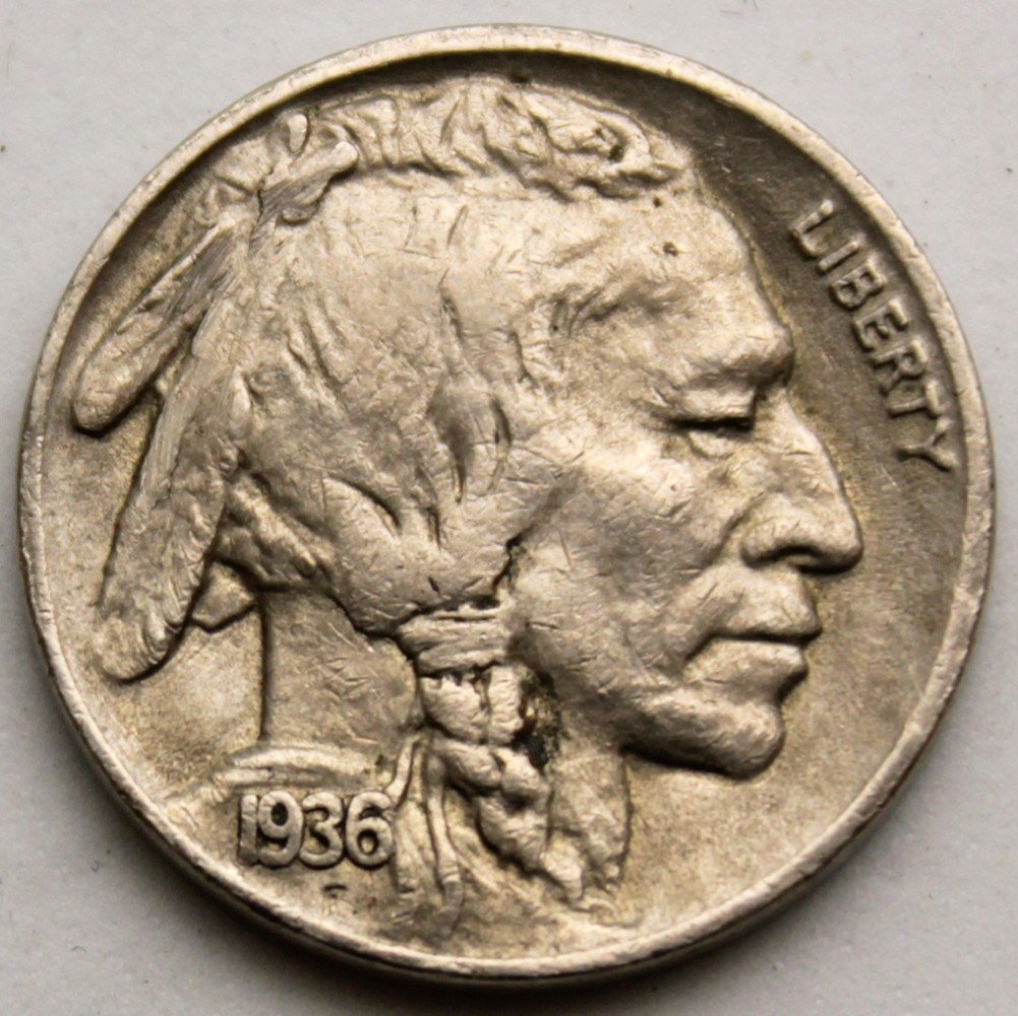
Indian Head Nickel
The third coin to take the spotlight acts like other coins in cinema, like psychopomps—like the one in Willy Wonka that Charlie auspiciously/suspiciously “finds” in the gutter and uses to buy a Wonka bar with a golden ticket inside. Similarly, Cooper tosses a coin in Season 2 (in an audio-visual sequence reminiscent of Red’s coin toss in Part 6) that just so happens to land on a picture of Dead Dog Farm which, sure enough, becomes a lead in the case. Dead dogs and farms are also important parts and code-words in The Return. Rob E. King wonders if the silver dollars from Wild at Heart resonate with the dog legs Mr. C. uses to threaten Warden Murphy.
“If I had a nickel for every cigarette your mom smoked, I’d be dead.” The coin that leads Hawk to the golden ticket of Laura’s story is called a Buffalo Nickel and Indian Head Nickel, two names, minted for 25 years, from 1913 to 1938. Some of them are very, very, very valuable, worth hundreds of thousands of dollars each. It’s the same type of coin that steers the plot of the 1996 Dustin Hoffman film American Buffalo. One and the same. Why does Hawk have this rare object in his pocket? Does he take pieces of his coin collection to work? Is it an heirloom charged with real magick, a divination tool of some sort, or did someone slip it into his change unawares? It jumps out of his pocket and points him to the other generic Plains Indian Head on the bathroom stall door, leading to a crack, and to what’s missing.

What I find triggering is that the coin was designed by End of the Trail creator James Earl Fraser. Both of Fraser’s works, End of the Trail and Indian Head Nickel, occupy a very special place in the hearts and minds of settlers and Indigenous Americans. Roy Lichtenstein called End of the Trail “the first conscious cliché.” They’re also great examples of material agents of empire that reinforce the fetishization and dehumanization of Indigenous people.
For example, usually US coins honor and commemorate someone specific, someone with a name, but not this one. “My purpose was not to make a portrait but a type.” Read his words:
When I was asked to do a nickel, I felt I wanted to do something totally American—a coin that could not be mistaken for any other country’s coin. It occurred to me that the buffalo, as part of our western background, was 100 percent American, and that our North American Indian fitted into the picture perfectly.
“North American Indian”? It’s an amalgam, an impersonal “Indian” every bit as nameless as the buffalo on its reverse.
A linking or “bundling” occurs, “Indian” and animal, two sides, one coin, the settler ideology further secured through the symbolic logic and power of a perfect circle and precious metal (see Minting Identity). This generic native mascot (from mascotte meaning witch) gets replaced by Thomas Jefferson in 1938.
Related, the Indian Head Penny also depicts no one in particular, a stereotype, a lady modeled after, get this, a Venus Pudica statue (like the one in the Red Room) on loan to Philadelphia from the Vatican, rendered wearing a fake Indian headdress: the “war bonnet” was designed to resemble the Statue of Liberty’s tiara. So-oo, it’s Liberty “playing Indian,” recalling the turkey feathered headdresses worn by Anglo-Americans at the Boston Tea Party, members of the first-ever U.S fraternity The Improved Order of Red Men, and Johnny Horne. The Indian Head penny is also a prototype for the White woman rocking an Indian Headdress trope.
This specific profile is known as a Plains Indian Head due to the feathered headdress and imagined connection to tipis and horseback riding—imagery promoted by the popular Buffalo Bill’s Wild West Show which toured the United States and Europe and featured almost exclusively Lakota performers, some of whom had even participated in the battle of Little Big Horn that they reenacted. Many died during tours; their bodies never interred properly. Cheyenne Arapaho artist Edgar Heap of Birds, through his form of contemporary signage, points out the Lakota bodies throughout Europe that never returned to their homelands.
The iconic Indian Head now appears on packaging for foods and on logos like the Indian Head Gas Station Cooper and Truman visit in Season 1 Episode 5. In “I eat stereotypes like you for breakfast,” Cherokee scholar Adrienne Keene chronicles how this ubiquitous synecdoche, this “wallpaper” and “hyperobject,” associates Native peoples with food and consumption.
Part 6, enter stall door, an object made by “Nez Perce Manufacturing,” that features a generic Plains Indian Head. It’s probably supposed to represent Chief Joseph, but this is not a real Native company, which means that part of Deputy Hawk’s “heritage,” apparently is having his tribe’s name and image appropriated by a toilet stall manufacturer.
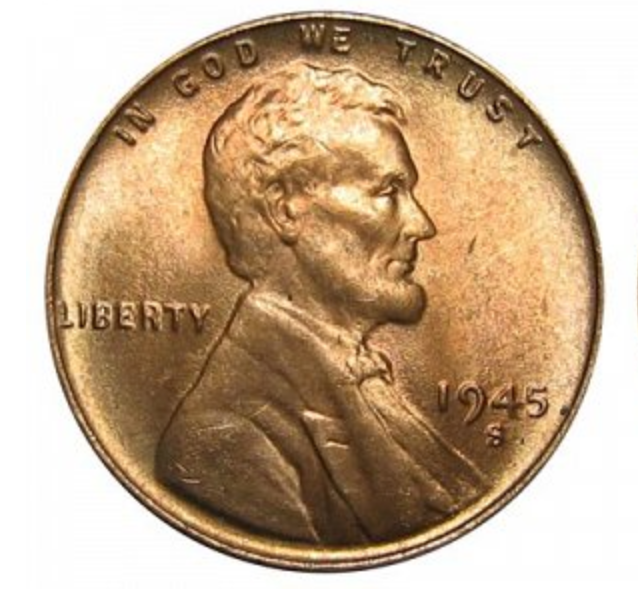
Penny
Last, or first, to commemorate Lincoln’s hundredth birthday, the Lincoln penny was designed in 1909 by Victor David Brenner at the behest of President Theodore Roosevelt. It’s the first US coin to feature the face of a “real” person. We get Lincoln before Washington—shorthand for anti-slavery over slavery? Who knows. On a certain level, Lincoln is America’s second Father. Now Brenner’s low-relief medallion is the most reproduced piece of art in world history. Think about that for a second. His tiny initials VDB appear below Lincoln’s shoulder, which he says is a way to “index and trace environments and conditions of the time said coin was produced.” Fifty years later the Lincoln Memorial was added to the penny’s reverse, complete with a tiny representation of the statue within it, giving us more Lincolns.
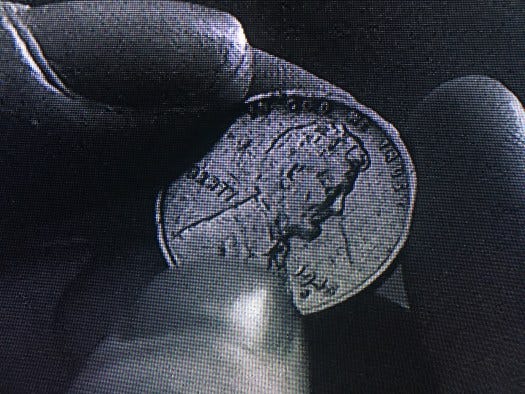
“One.” This 1945 penny (year of the Bomb), was on the ground face up on August 5th, 1956, the day before the 10th anniversary of Hiroshima—but Japan is a day ahead of the US, so…
It was heads-up, which prompted a teenage Sarah Palmer to pick it up. “I heard that brings you good luck,” she said to the boy. “I hope that it does bring you good luck,” the boy said. Was this Sarah’s first dance? Was it her first walk home with a boy? In one reading, that night Sarah dreams of Lincoln’s ghost in blackface haunting the radio, making her fall asleep so a frogmoth can crawl into her mouth.
We read in the Final Dossier that she wakes up en route to the hospital having been found unresponsive by her parents. Was she drugged? Her throat and jaw hurt, and her stomach felt funny. Was she raped after the dance? The signs point to yes.
Sarah touched Lincoln’s face, and then we see Lincoln (?!?), which is all very dream-logical and cinematic—the whole thing feels like a twisted version of the Wizard of Oz.
If this penny is marking a place close to home, we can imagine it parallels the place where Laura screams in Part 18. Even worse, in her diary, we read that Leland/BOB often took Laura right outside her house to rape her. They’d go right out the front door, and before Laura figures out who the man behind the mask is, she says she thought it was someone her mom and dad knew, because why else would they never respond to the noise?
Is the penny the mask used to cover up the identity of her rapist? Is Lincoln? If it’s really Sarah and not just Laura’s dream version, then maybe the penny is a mask for the darkness that revealed itself that night—a demon that will draw Leland to her and co-create Laura. It all starts here, on Sarah’s walk home with… what was his name again?
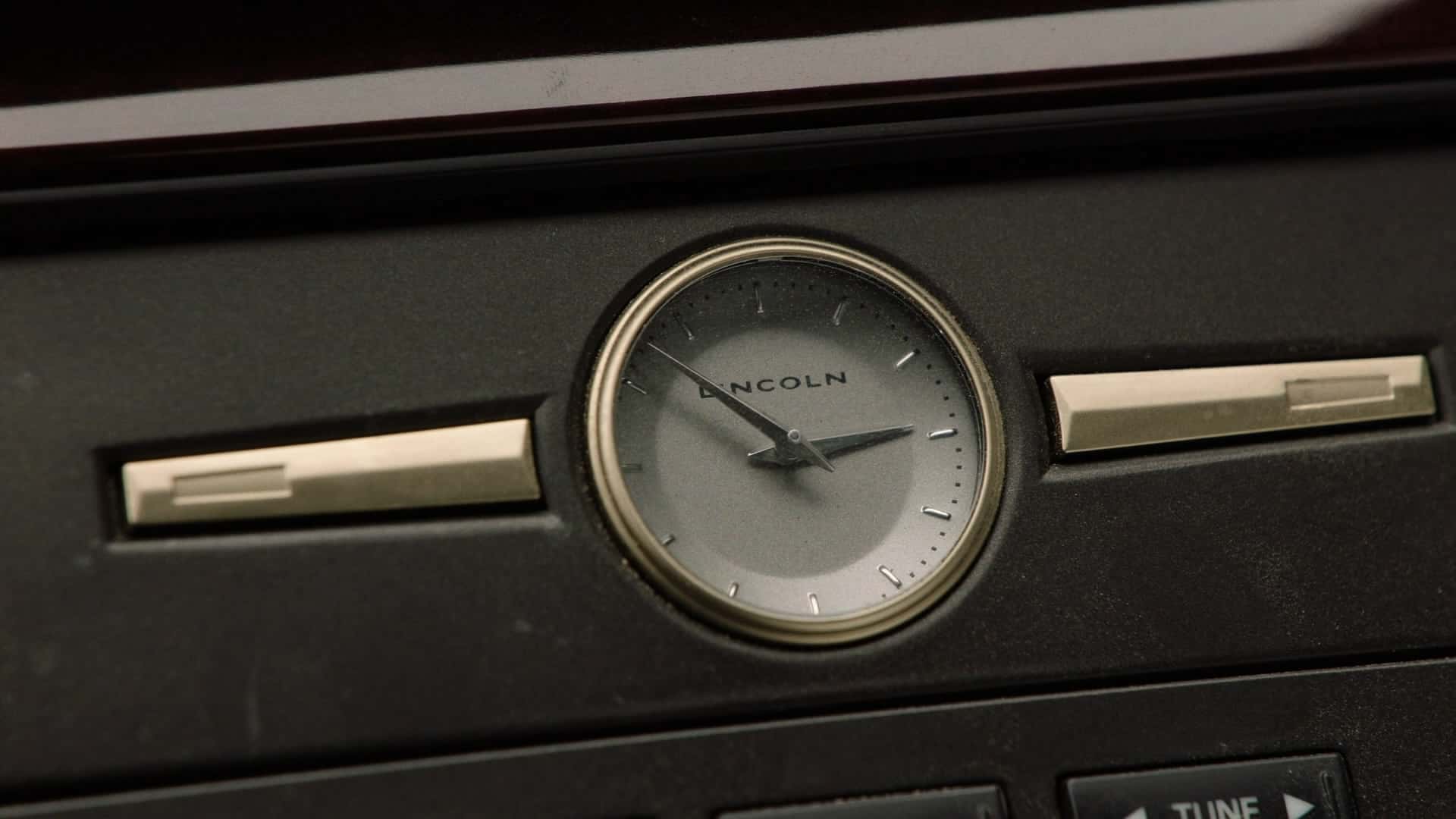
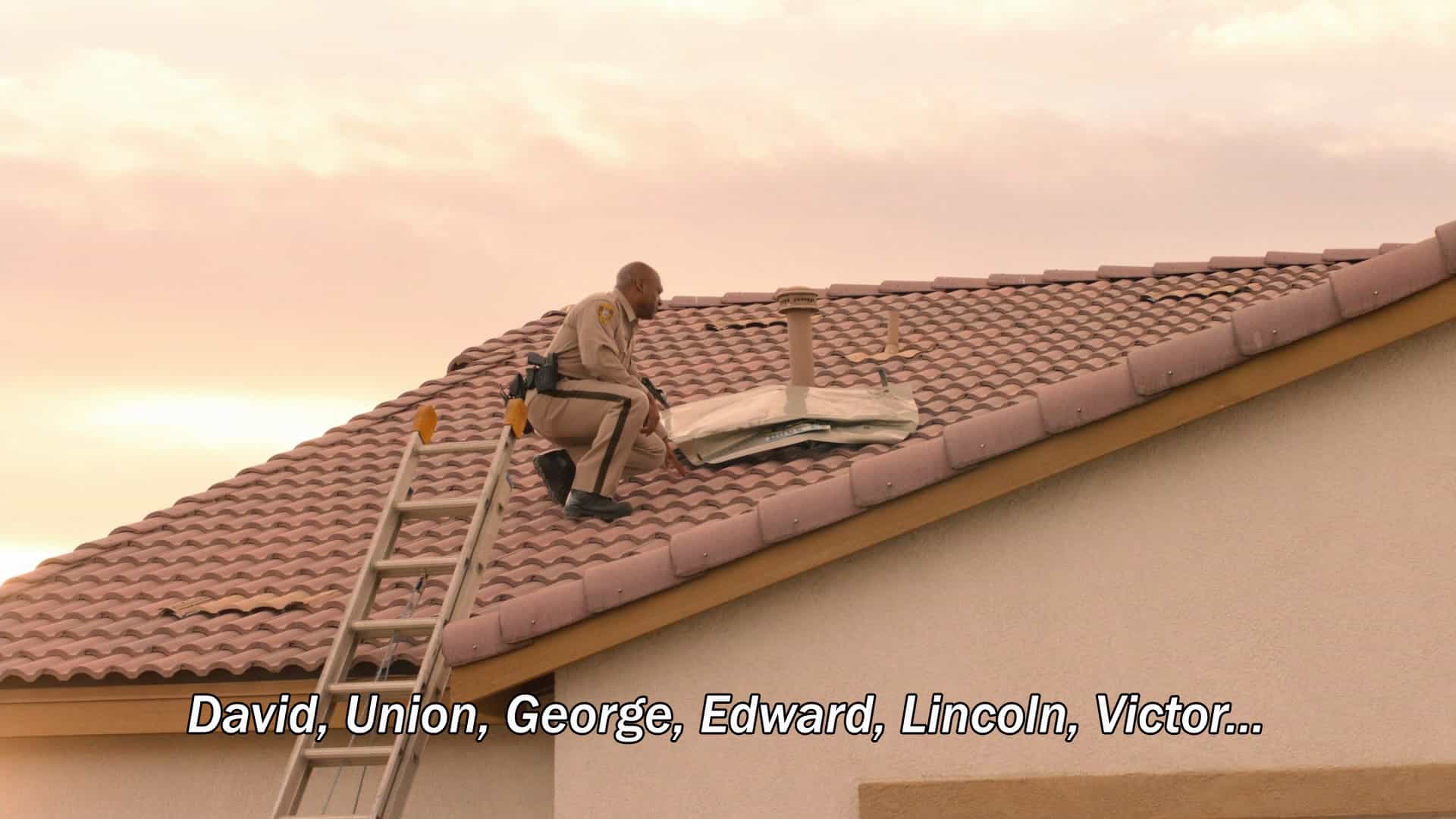
Lincoln
Keith Uhlich’s recap for MUBI points out that Robert Broski plays Lincoln in other films, such as Linclone (2014) and Netflix’s Pee-Wee’s Big Holiday (2016). After he appears in Part 8, the other ghosts of Abe Lincoln sprinkled throughout the show came into greater focus. Lucas Bracci on WelcometoTwinPeaks lists a bunch, including the three Lincoln Town cars, and connections between these cars are creatively explored by kelevico on Reddit.
Constance has a bust of Lincoln on her desk for some reason, and Hawk has Lincoln Logs on his desk for some reason, as well as a jar full of pennies. Is that where he keeps his coin collection? Is it his wishing well?
Last year Redditor Friedgoldfishsticks noticed that “the scene where Laura pops out of the Fireman’s head resembles a reenactment of Lincoln’s assassination.” It really does! Lincoln’s head is also on the five-dollar bill which was given to Cooper by Jade for calling someone. Brandy Fisher, Moderator and Chief of WelcomeToTwinPeaks, describes real-life synchronicities with fives after noticing Lincoln in the show, declaring that “Lincoln is all around us!”
Lincoln is known in many Indigenous communities as the murderer of the Lakota 38, the largest mass execution in US history. He was also the first president to acknowledge the sovereignty of New Mexico’s 19 Pueblos, and his administration presented each Tribe with a living art object—silver-tipped canes, as is tradition, ebony canes with A. Lincoln and the tribe’s name engraved on their silver crowns, “to symbolize a perpetual commitment of the United States to honor Pueblo sovereignty.” The keepers of the canes, as “governors,” vow to serve their community, ritually “feed” the cane, and take it wherever they go. These living artworks are also treaties, akin to wampum belts and Juanita’s textile assemblage.
Narratively, the penny foreshadows the Woodsman Lincoln’s inseminating words, the slimy atomic frogmoth that enters Sarah’s mouth, the poker chip that enters Laura’s mouth, the dime that enters Richard’s mouth. It’s a strange coincidence that people used to bite down on coins all the time. We see it in movies and on TV. Coins and mouths go together.
Coins and Cum
Coins have long been used as a metaphor for semen, especially within the context of prostitution. Hannah Aspinall focuses on coin metaphors and prostitution in the Victorian period, when the female genitalia was likened to a “purse,” and “spending” meant cumming. The man who pays for the prostitute literally spends money on sexual intercourse, but he is also “dropping his payment into the purse of the prostitute.” It’s worth noting that coins tossed onto counters appear in TV montages of prostitution (see Bridgerton, Season 2 Episode 1) and that the phrase “He opened his mouth and a purse fell out” refers pejoratively to a gay man who talks like a woman.
Semen is likened to coins by the incredibly accomplished and influential Yogi, Swami Muktananda. In Play of Consciousness, Muktananda compares seminal retention to saving money: “You should preserve your seminal fluid, which is your radiance, as you save money, watching every penny.”
More, in accounts about the Curse of Ham in rabbinic literature, minting coins is used as a metaphor for procreating. The blackening of Ham’s semen is compared to the blackening of the man’s face on a coin. “I decree that the image be blackened and the coin be invalidated.” This Biblical story of Ham’s lineage/coins being cursed black will be used in Europe and the US to justify slavery and anti-black racism.
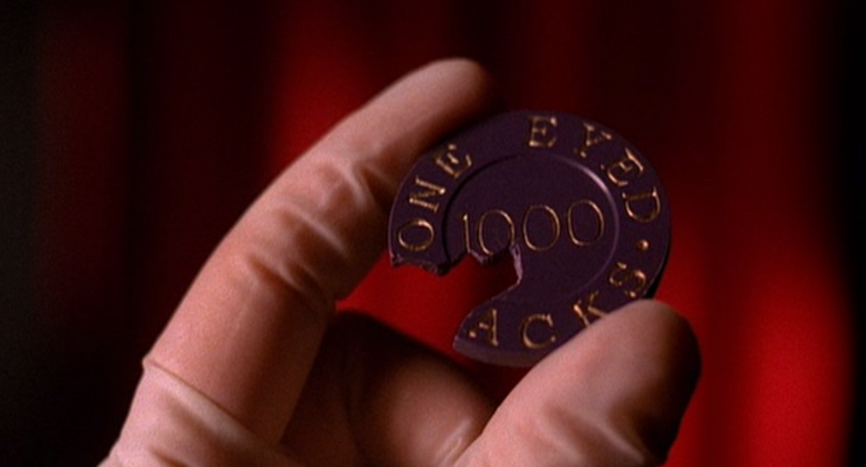
Owls
Cowrie shells, mostly harvested from the Indian Ocean, were the first coins. William Irwin Thompson remarks that these small objects were revered by so many cultures all over the world because they carried, not the face of a man, but the image of the generative vulva of the Great Goddess, “an icon going all the way back to 75,000 BCE. As the Great Mother was the source of all, she was a good God in whom one could trust.” The shell is also a tiny home, like a cave, and caves embody openings, shadows, and sources of knowledge, what feminist Elaine Showalter calls “the female wild zone.” Can you hear the ocean?
The miniaturized vulva became a form of payment from China to Africa to the Americas as billions of shells were added to the Hawk bells, glass beads, pearls, pelts, and other precious matter. (The euphemism will shift from feminine into masculine referents, the yonic shell shifting to the phallic coin, so that “suck my coyn” means suck my semen in Victorian slang.)
Turns out anything really shiny was especially valued in the Americas. (See Nicholas Saunders’s story about sacred light and the “aesthetic of brilliance“). Complementing this love of shine, Japanese people are known for their love of tarnish—the “sheen of antiquity,” and have developed an aesthetic of shadows. Tanizaki: “We do not dislike everything that shines, but we do prefer a pensive luster to a shallow brilliance, a murky light that whether in a stone or an artifact, bespeaks a sheen of antiquity. A ‘sheen of antiquity in this case denotes a glow or polish that comes from being touched over and over.” Tanizaki laments that people who polish away the grime and tarnish lose forever what was so “patiently waited for.”
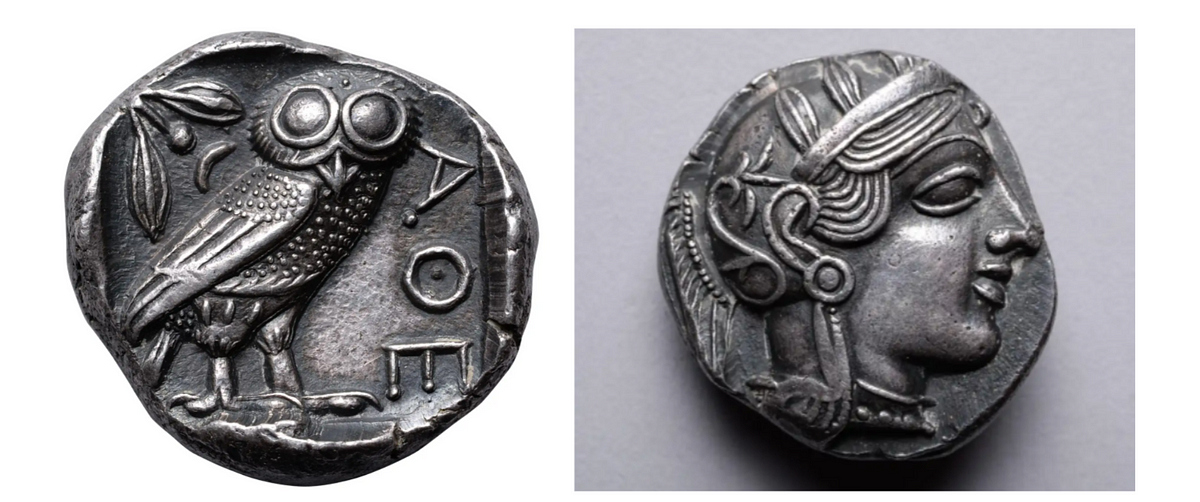
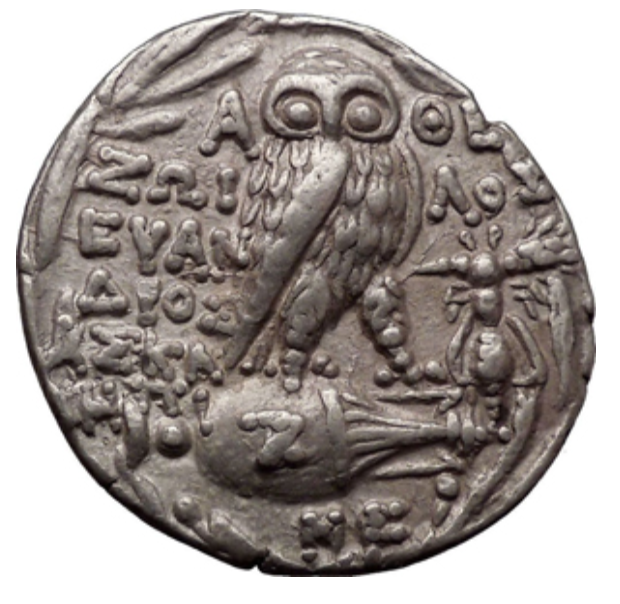
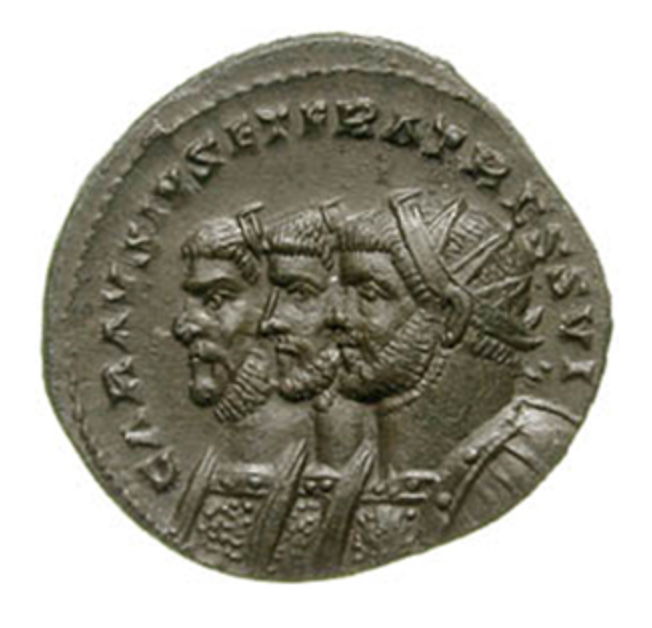
The great Lou Ming thinks the jar of coins on Hawk’s desk relates to the jar of beans on the FBI table in Part 1—extensions of the theme “one containing the many.” He says,
and if these clues are in sequential order, as they seem to be, the explosion of Laura’s psyche from a simple split to a multitude contained within her mind could have been the result of the traumatic experience.
Coins, like beans, “seeds,” and eggs, represent potential new life, and something even deeper: money is justice, which is why Ming thinks Laura would have loved coin imagery. I’ll add it’s why she remarked on Pierre’s coin magic on that horrible day in her diary—why coins mask something deeply significant. In that exchange, do we witness another way to harvest garmonbozia? BOB/Laura rapes Harold, generating pain and sorrow, which is removed out of Laura’s head and concretized into a gold coin by a little Tremond.
Meanwhile, empires use coins to propagandize because they tell a story that helps the imperial rule become more acceptable for colonial subjects. Coins bearing male faces also normalize male-only power. My 5-year-old daughter was angry the other day because she “knows” that “boys are better than girls!” And I thought how on earth could she think that, considering she has two amazing moms, and then I noticed that all the currency and coins in her ever-growing collection feature male faces. Coins, like toys according to Barthes, prefigure and justify social relations, and maybe even whole theologies. Peter Sloterdijk thinks the two-faced jugate bust Octavian denarius from 38 b.c. was the first model for a successful doctrine of the Trinity: a father and son together, united by the circle of inherent value that flows throughout the nation like blood, materializing:
“a monetary empire with omnipresent impartial money… As long as the coin was in circulation, one could indeed obtain everything with it” (Bubbles 180).
Sloterdijk also compares coinage to the bubble metaphor for subjectivity: a head within a circle. He sees bubbles everywhere: there’s a media bubble, a hubble bubble, a body bubble, a social bubble, a private sphere and a public sphere. Even “raising human consciousness” uses money and bubble metaphors. The problem is that this story of bubbles, boundaries, coins and identities can strengthen the ego/separate self-sense, the “I”, and this “turns man into the idiot of the cosmos… who has willingly embraced exile and expatriated himself from his immemorial security in self-blown bubbles of illusions.” Sloterdijk also connects coin and bubble imagery to the personality in the placenta (aka The With). For more about coins as material products of ideology, see Circulating Imperial Ideology: Coins as Propaganda in the Roman World. For a short anthropology of money, see Chapter 3 in The Psychological Science of Money. See also “Money, Art, and Representation: “T’was only a balloon” — Seeing and Satire” in Cultural History of Money (2019) by Nicky Marsh, and Kseniya Shtalenkova’s At the Intersection of Semiology and Ideology: Mythologies of National Images in the Design of French Coins and Paper Money.
Bill Maurer calls our belief in the inherent value of materials a kind of “coin consciousness.” Walter Benjamin might say this kind of consciousness is how we generate aura, and it’s crucial to the formation of the world.
Ghostmodernism—I am dead, yet I live.
All coins are miniature copies of works of art—in this case, low-relief portraits of Washington, F. D. Roosevelt, Lincoln, and some made-up Indigenous guy. They are also copies, ghosts, traces of where the artist’s hand and mind have been.
As such, perhaps these coins point to hauntological or “ghostmodern” readings of the story. The term hauntology was coined by Derrida in the early ’90s because it sounds like ontology, and is a way to examine the spookiness of “being-in-the-world.” It supposes that hauntings and the supernatural are not paranormal but perfectly normal—hauntings are inherent aspects of our experiences with language, memory, place, and bodies.
Do you have a coin nearby? According to anthropologist John Harries, just touching a coin is a type of abduction whereby the small object becomes an artifact that indexes “the presence of an absent other.” He thinks that through touch, the distinction between past and present is momentarily dissolved, “giving rise to the possibility of historical sensation and the feeling of pastness.”
Akin to caves and darkness, coins afford different kinds of human consciousness. Peter Adamson: “You might assume that it’s just coincidence that the earliest philosophers, the Milesians, lived just as coins came into being in the seventh century BC, in the area where coinage was invented (Western Turkey). But scholars such as George Thomson and Richard Seaford have argued that it’s no coincidence at all. Money encouraged a certain kind of society, fluid in its exchanges and more advanced in its thinking. Unlike exchanging a cow for three goats, buying something with a coin implies a certain level of abstract thinking…”
“Own a piece of history!” One reason coins are so beloved by historians is that they are easily dated. Twin Peaks, on the other hand, is beloved because it’s not so easily dated. In fact, a theme of the show is time being out of synch—phones, clothes, hairstyles, cars—different eras collide. What year is it? On screen, whenever we have a license, a signature, a computer, or anything that might give us a date, we zoom in and find it’s intentionally obscured. (Three out of the four coins don’t have specific dates). In most of Lynch’s films, we get a wild blend of material from different eras—flip phones next to smartphones next to rotary phones. This anachronism or parachronism or temporal mixing is present in a handful of coins.
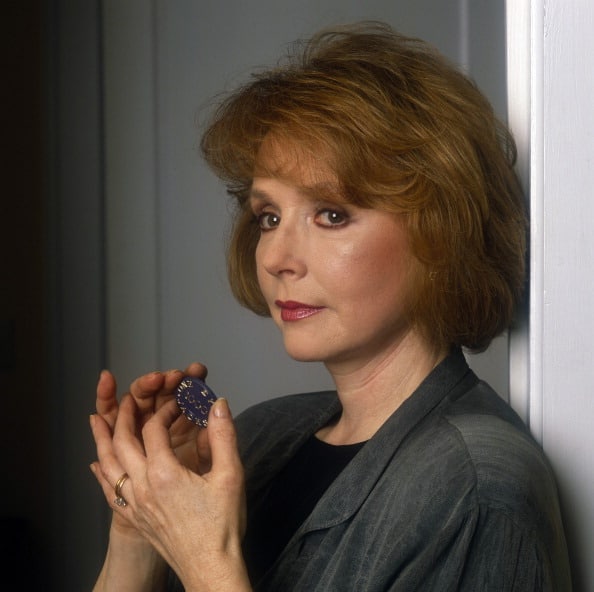
Conclusions
The flipping and pocketing of coins, as well as coins being heads up or tails up, are some of Lynch’s ongoing themes. As Agent Cooper put it:
I believe that these mysteries are not separate entities but are, in fact, complementary verses of the same song. Now I cannot hear it yet, but I can feel it, and that is enough for me to proceed.
If you have a coin, pretend you’re a character in the show and hold it in your fingers. Which character are you? Notice how the coin tells the fingers where to press, and where the mind should focus, and what to do next. Who possesses whom?
Coins signal moments of chance, magic, hauntings, and horrific states of unknowing while repeating the image of disembodied heads inside bubbles. Zora Burdan remarks that coins resemble full moons in Twin Peaks, “so they symbolize the unconscious, intuition and psychic awareness.”
None of the coin scenes in The Return are straight-up “magic tricks,” and yet, due to Lynchian numismatics, something magical or supernatural is present in each. The coin scenes provide a shift in mood. They are like the magical Twin Peaks dancing scenes: events that figure an “alter-logic,” as Alanna Thain would put it, “exposing other modes of knowing and perceiving.” They can move us from the nonsensical to the sensical to the trans-sensical, or from the physical to the symbolic to the hieroglyphic.
Finally, the coin scenes resonate with Laura’s story, with her time spent in casinos, bathrooms, behind warehouses, and right outside her home being sexually abused by BOB. Considering Lou Ming’s impressive Find Laura hypothesis, we can read coins as more signals for the secret truth that Laura is repressing (that BOB is her father): In fact, Ming argues that, in Part 3, Cooper is an aspect of Laura’s subconscious and is “helping” her. “By abstracting the tools of her original mental escape from trauma (disassociation and assumption of guilt/garmonbozia) into things associated with good fortune, he [Cooper] recontextualizes the thing that trapped her into the thing that will free her.” Ming continues:
Tying the secret thing to endless examples of good fortune lulls Laura’s subconscious into a sense of security, and the endless conversions of the secret to cash, to bill, to coin, to jackpot, and onward insulate her from recognizing its source as the thing that would trigger monsters.
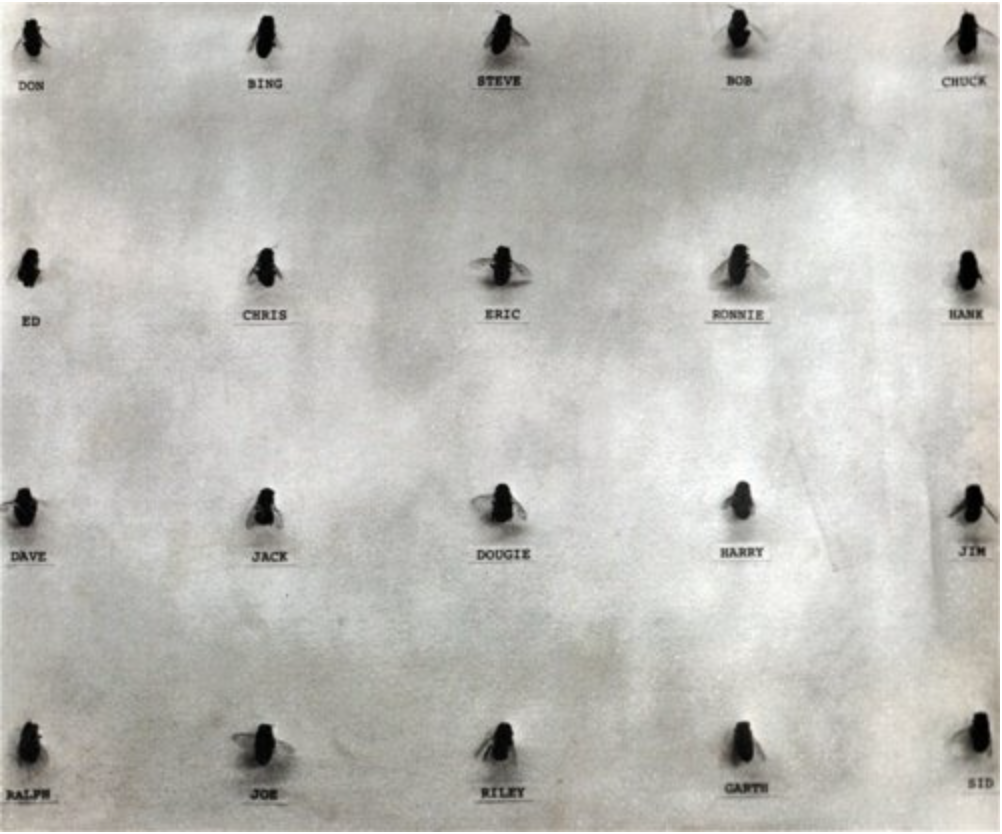
End Notes:
- Roosevelts. Frost says in The Secret History that Frank Truman and his brother were named after the two sitting presidents of Word War II, Franklin D. Roosevelt and Harry S. Truman. How perfect that Kyle MacLachlan plays Franklin Roosevelt on the Norwegian TV series Atlantic Crossing. “The Norwegians are leaving! The Norwegians are leaving!”
- Two names: Amerigo Vespucci and the 1507 Waldseemüller map were involved in the name change, but the U.S. was originally named Columbia. This is why the capital is called Washington D.C.(Washington District of Columbia). It’s absurd because Columbus never even set foot there. (For the record, “first contact” between Indigenous Americans and Europeans is recorded around 1000 AD with Mi’kmaq trading with Vikings in what we now call New England, 500 years before Columbus.)
- There could be more connections between coins and the I-ching hexagrams, as well as tossing coins into fountains and wells to make wishes.
Dedicated to the great Lou Ming.


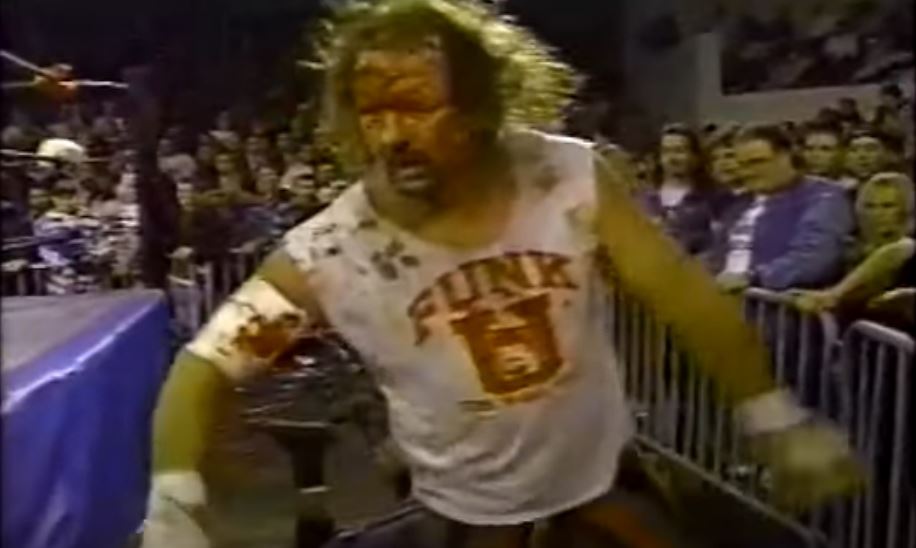
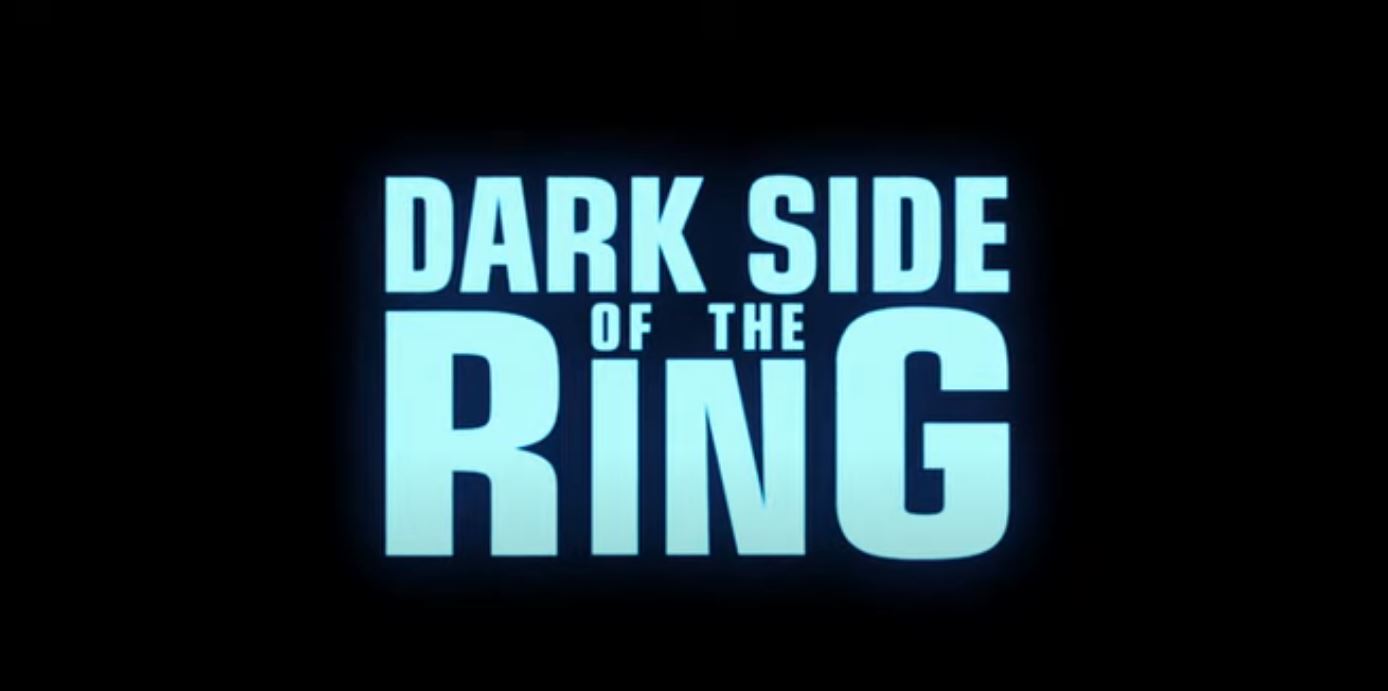

I posted most of this at Reddit but thought it could also add some insight here, as a different viewpoint to things.
What are coins? They also are commonly known as change. The coins that appear in The Return herald some sort of important change. At the casino, Cooper helps the woman gambling addict bring about positive change through her life. Red’s encounter with Richard leads to the death of a small boy and Richard leaving town. Hawk finds the missing diary pages thanks to the nickel which leads to the discovery that it wasn’t the “good” Dale who left the Lodge that night. And the girl (I suspect she represents Audrey not Sarah, because Part 8 strongly echoes what happened to her with the bank/Mr. C) finding the penny leads up to her impregnation by the frogmoth with itself.
Now what is magic?
Well…unfortunately, it is most often a trick.
What does Red function at primarily? He is a drug dealer and a magician.
Both are, in effect, tricks of the same kind.
The magic performed by a magician is little more than an illusion, aided by sleight of hand, transplanting the audience’s attention on something trivial while the focus is taken away from the true matter of importance.
Drugs too are, in effect, an illusion. They help the user forget their pain to achieve a physical high and yet the problem still exists because, by accepting escape, the addict fails to seek what is more integral for their ultimate healing: a solution and actual change, most often of their own destructive behaviors.
Red is connected to the grandson. They are the same individual, but not in the way that has been primarily suggested. They are aspects of the dreamer of Twin Peaks, and partly embody the act of the dreamer having created an illusion to help escape his reality.
I don’t believe the theory that this is all Laura’s dream, however, but instead see her as a very large part of the illusion/deception itself. She’s the One in the sense that by “reimagining” her death the dreamer helped retreat into a fantasy where he could deny his responsibility and place it on someone/something else: Leland and BOB.
You see, I believe the dreamer is her real killer, William “Billy” Hastings.
It is important that we follow the thread of finding Billy not Laura, because this will lead to the dreamer awakening, for that is who he truly is.
The magicians play their own integral role in helping to find him.
At the end of Part 18, the grandson’s aliases are invoked, living at the Palmers’ house (it is in our house now) but this fact is usually ignored. Cooper, despite having heard both the Chalfont and Tremond names ignores the clue. Infact, he has never met the grandson and his grandmother, but is always too late to. Maybe, if he ever did the dream would end, Cooper being the leading avatar for Hastings inside of the dream and the grandson potentially being Hastings younger self.
What is interesting with Red in all of this, is how Twin Peaks often echoes Lewis Carroll’s “Alice Through the Looking Glass”. In that work, it turns out to have all been a dream, but the question is posed, returning at the end, of who the dreamer really is: Alice or the RED king? ALICE Tremond is the name of the woman residing at the Palmers.
Besides the act of magic, another thread ties Red to the grandson. As BOB/Leland was fleeing from his failed foursome, the grandson appeared, wearing a white mask and jumping in the parking lot of Teresa Bank’s motel. What often goes unnoticed is the name of the motel: the RED Diamond City Motel.
Furthermore, from this, and the fact that both women were called little girls and reside at motels/hotels, we can link Teresa specifically to Audrey Horne. Audrey chose the Queen of Diamonds as her card when she went undercover as a prostitute (Teresa’s profession) at One Eyed Jack’s. She was even seen wearing the card, along with her own white mask, when her father propositioned her there.
This leads me to believe the other huge act of illusion/misdirection the Magician helped spin inside of the world of Twin Peaks was Laura Palmer being abused by her father. She wasn’t. The abuse really happened between Audrey and Ben Horne instead.
The owls are not what they seem. The owls we see in Twin Peaks are Great HORNEd owls.
As a noun, the word Palmer is “a person who PALMS a CARD, die, or other object, as in cheating at a game or performing a magic trick”. Upon their first meeting, Audrey asked Dale Cooper if his palms ever itched, and I always remember this line when Red asks Richard if he has ever studied his hand before. Audrey was the card that the Magician had palmed inside of the Palmers.
Why would Hastings, as the Magician/dreamer, long to transplant Audrey Horne’s abuse onto his victim instead? Simple: He is the result of the abuse, the incarnation of his mother’s pain and sorrow, and wants to escape that fact and help “protect” his mother as well. Unfortunately, he also finds it difficult to see any women he is attracted to as separate from the mother he both loves (wishes to save) and fears (wishes to destroy). That is the real reason why we have both an Experiment and an Experiment Model.
Hastings being the tormented, murderous result of incest can also help shed light on Ruby’s Roadhouse crawl to the song Axolotl. Ruby is a word most often associated with taking someone home (Dorothy’s ruby slippers), while an axolotl is an amphibian stuck in a juvenile state (the grandson) whom is highly dangerous to it’s own kind and is often usually inbred.
It is important that we realize that Dale Cooper, who’s hotel room key lead him to a CLOSET in the BASEMENT of the Great Northern, will go to the Dutchman’s (the ghost of Teresa’s motel) and will eventually end up inside of another motel where, after having sex to the accompanying My Prayer (Audrey once said a prayer to Dale and it even has it’s own accompanying music) will become Richard.
The name of his son with Audrey.
And the very same person Red performs the bit of “magic” for.
When Red shows the magic trick to Richard, he is essentially revealing to him the truth about Twin Peaks: it isn’t real but only a bit of illusion aided by the classic use of misdirection that all magicians employ. The coin is NOT in Richard’s mouth, it was always in the air about to fall directly back into Red’s hand. The rest was all imagination.
This leads to a bit of bitter truth that the dreamer might not want to accept. No matter what Cooper attempts in the dream, he CANNOT change the past. Having fooled himself for this long, Hastings cannot leave his dream and win. His dreamworld is decaying and on the brink of ending, but outside of it means persecution and punishment for his crimes.
“Heads I win, tails you lose”.
Unwilling to CHANGE himself, for too long the dreamer gave into the magician’s illusion and now he is damned either side the coin ends up.